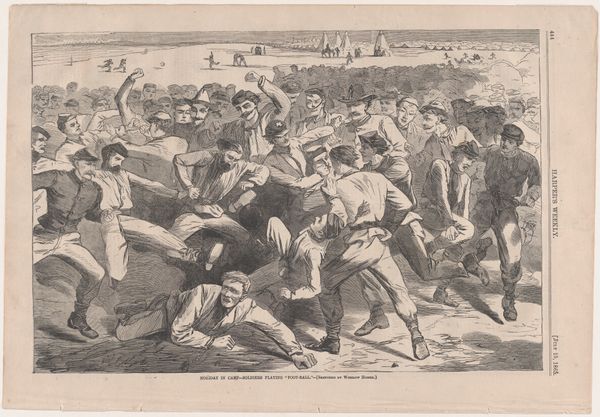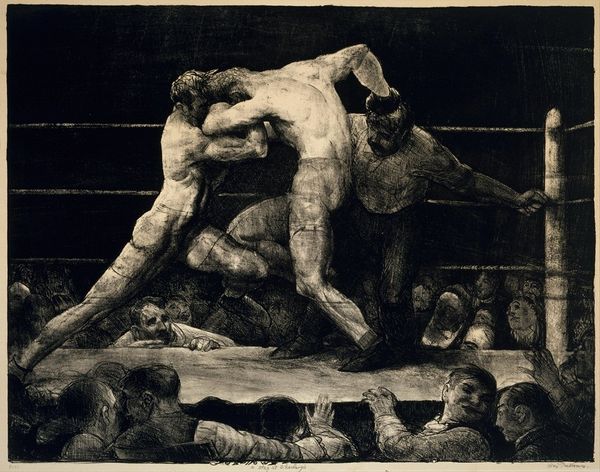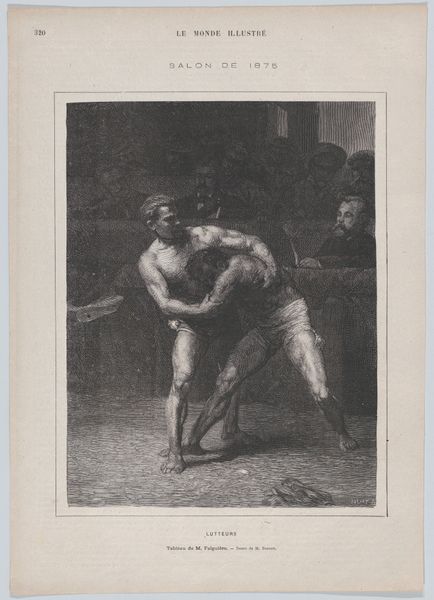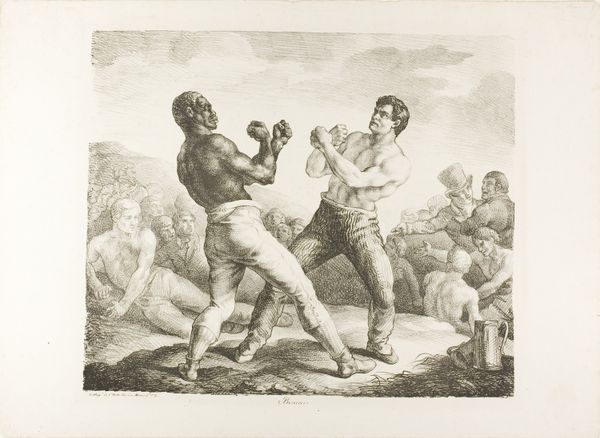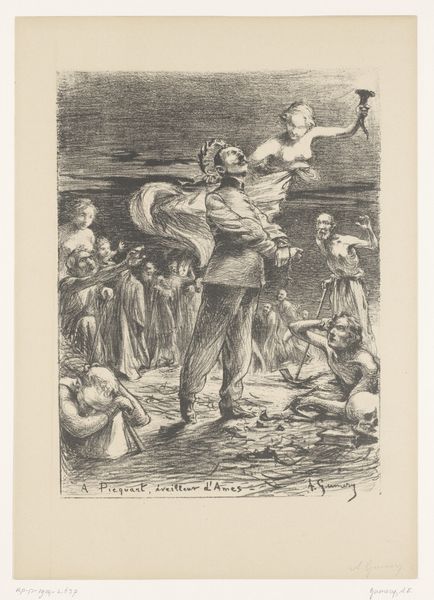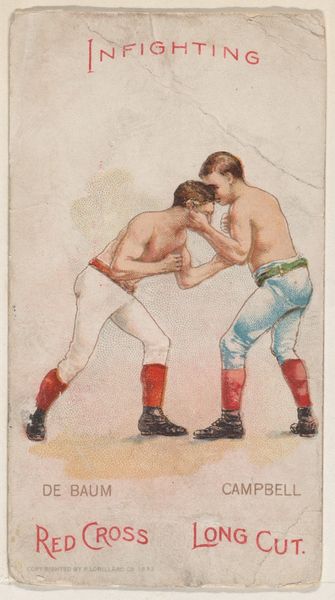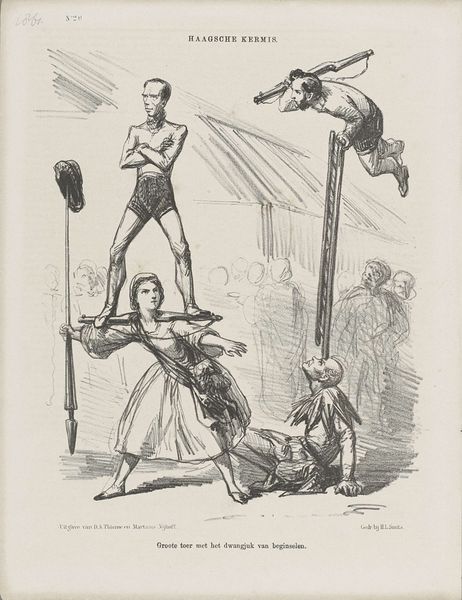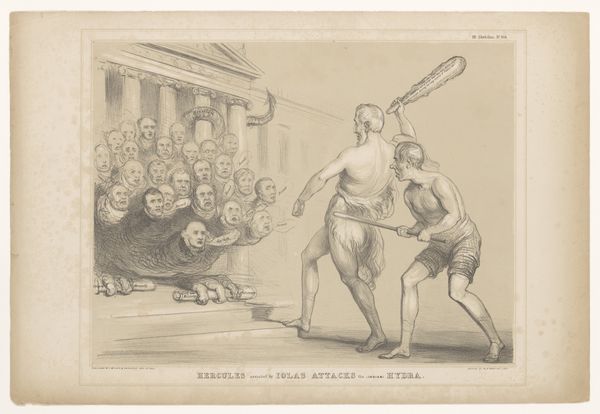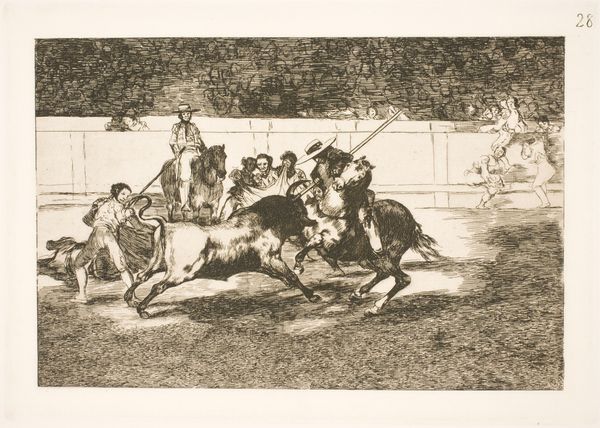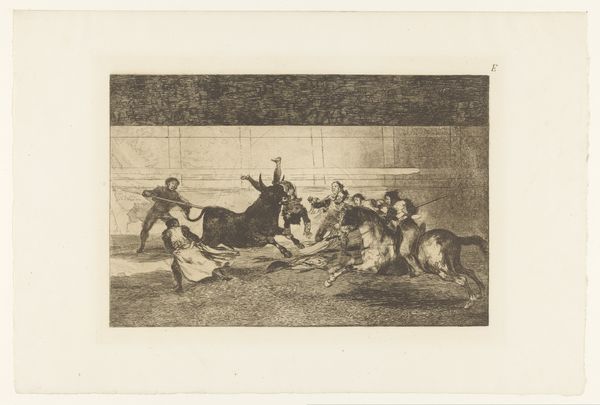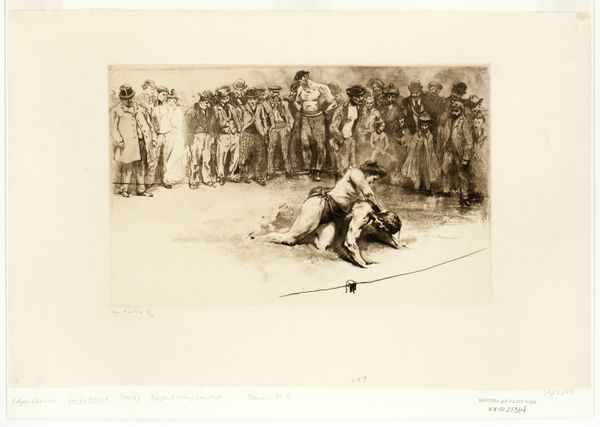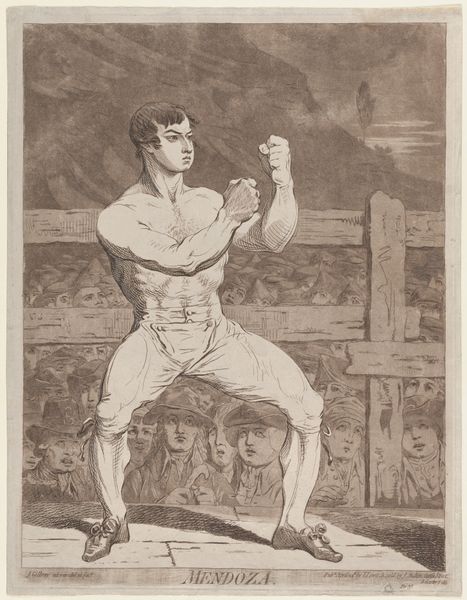
drawing, graphic-art, lithograph, print
#
portrait
#
drawing
#
graphic-art
#
lithograph
# print
#
ashcan-school
#
line
#
genre-painting
#
realism
Dimensions: 648 × 526 mm
Copyright: Public Domain
Editor: Right now, we're looking at George Bellows' "Counted Out," a lithograph from 1921. There’s a real gritty feel to it; a boxer is sprawled on the floor while the referee looms over him. The crowd is really getting into it. What jumps out at you about this piece? Curator: What electrifies me is how Bellows transforms a brutal scene into something strangely…beautiful. Look at the sheer energy conveyed through those frantic lines! It’s more than just observation; he's inviting us to feel the pulse of the crowd, the thud of the body. You almost forget about the brutality; instead, it's pure drama, a heightened reality. What do you make of the crowd? Editor: They definitely add to the energy! They're not just watching, they're part of the action, their faces are so animated! They’re almost like another character in the scene. Curator: Exactly! Bellows understood that boxing wasn’t just about the two in the ring, but this spectacle feeding off the energy of the audience, especially because Bellows belongs to the Ashcan school movement, which focused on painting daily life, especially in poor urban neighborhoods. So, it makes me think: who is being counted out here? Just the boxer, or something more? Editor: That’s a great point! Maybe Bellows is asking if we count out certain people or certain places… Maybe we’re all counted out at some point? Curator: Maybe, or maybe Bellows wants to confront the viewer with a sport viewed by many as unsavory while showing the energy that is clearly on display, thus pushing against that viewpoint, who knows… that's the best part of art in general. It gets us wondering, right? Editor: It sure does. I will not look at a boxing match the same way. Curator: Likewise. Each time, it’s like stepping into the ring myself.
Comments
No comments
Be the first to comment and join the conversation on the ultimate creative platform.
